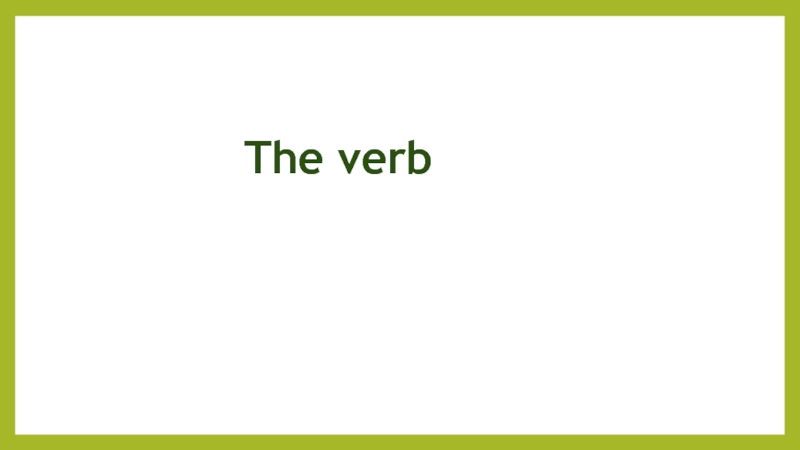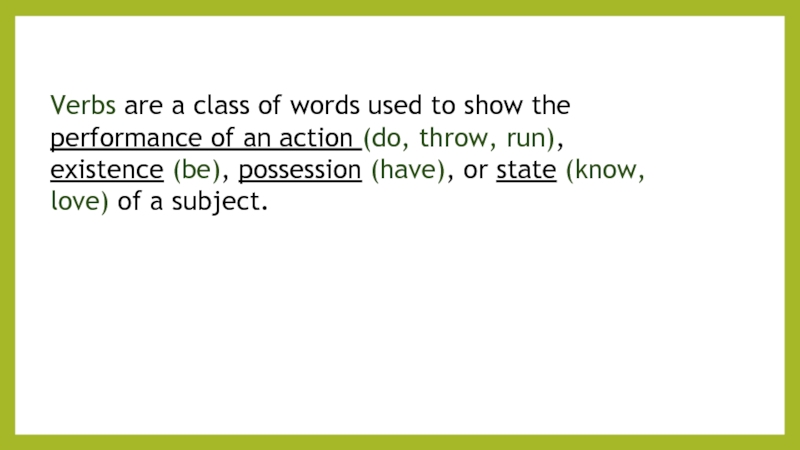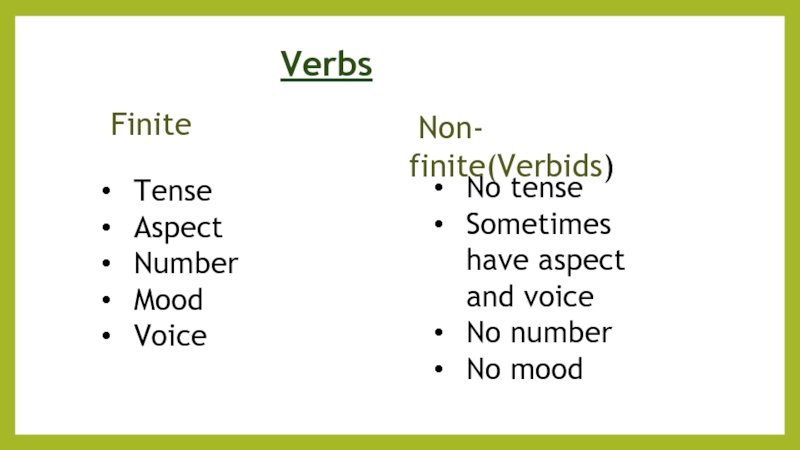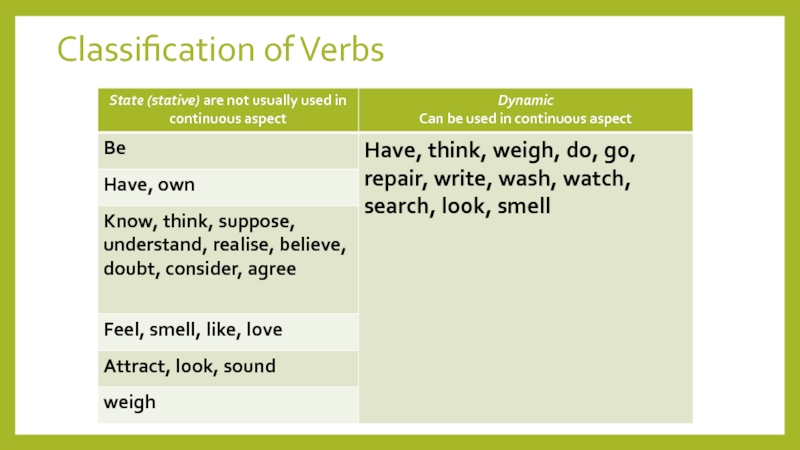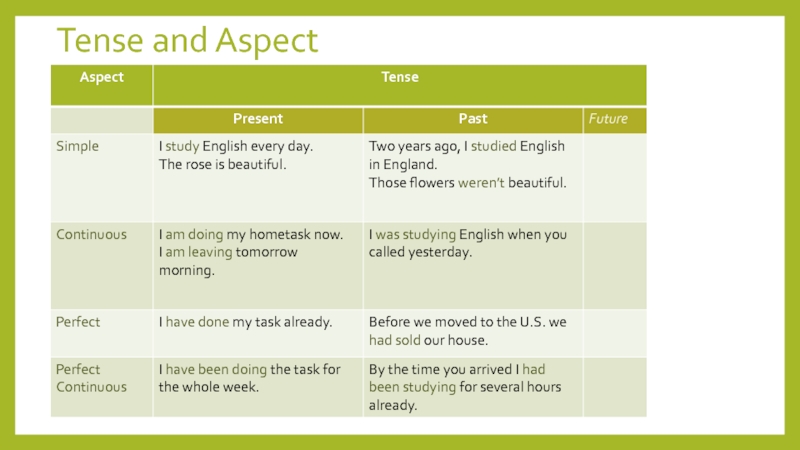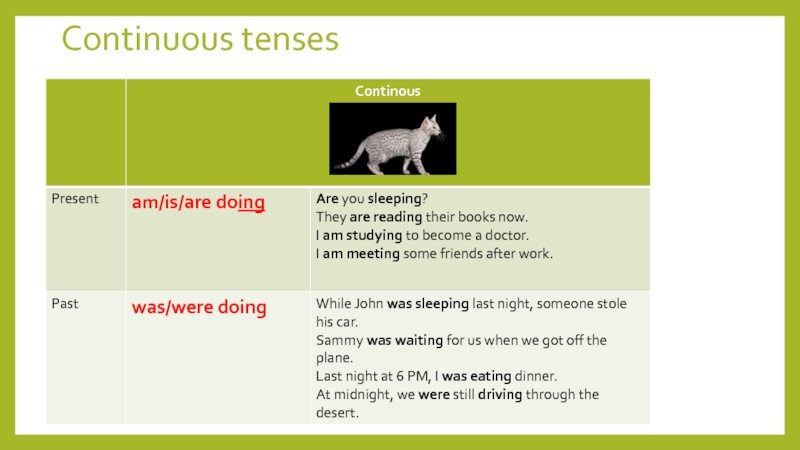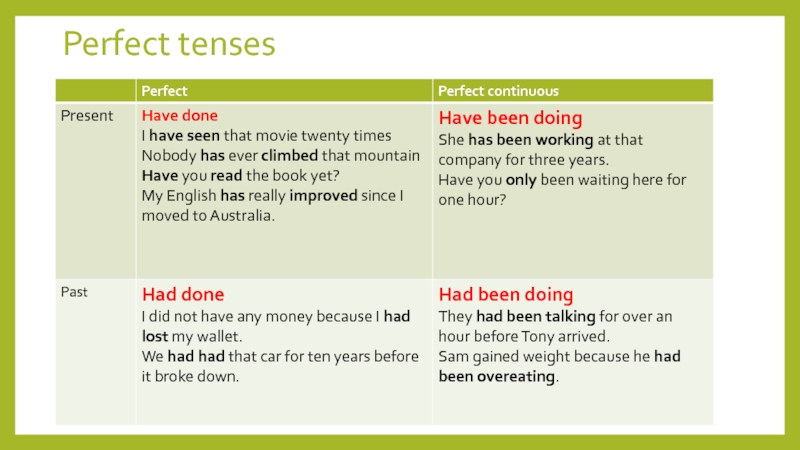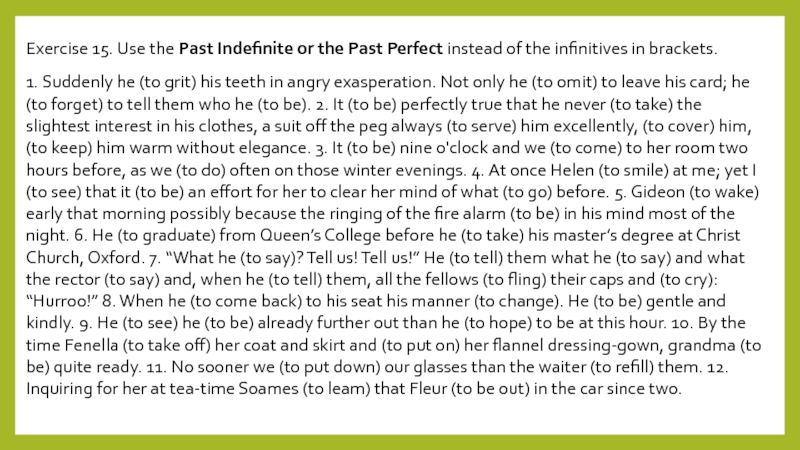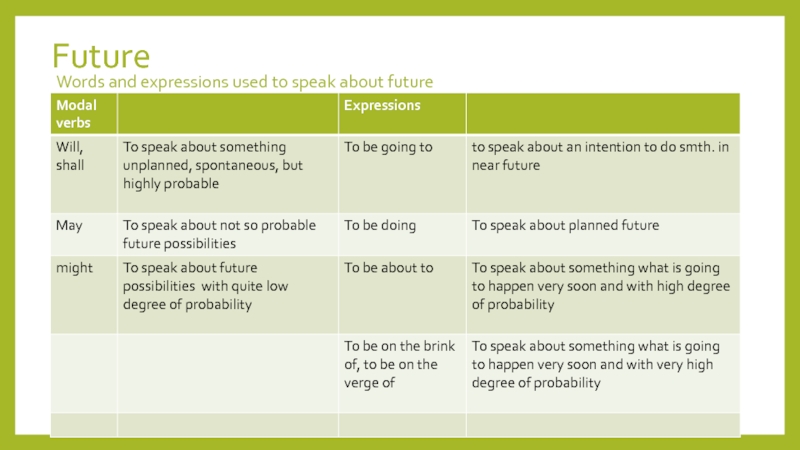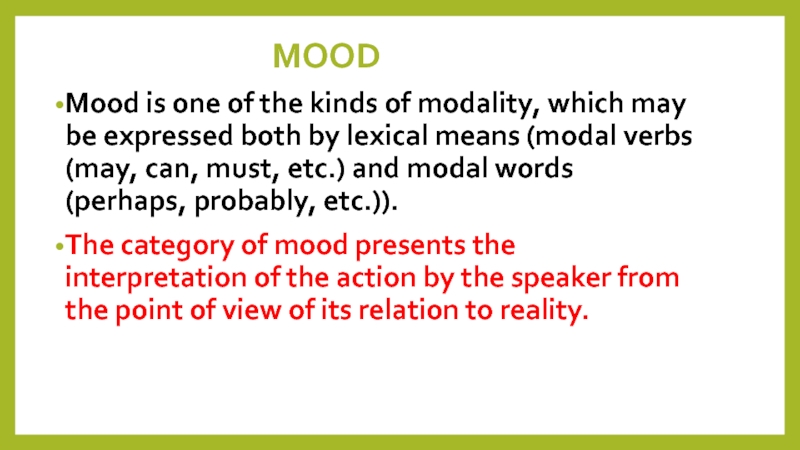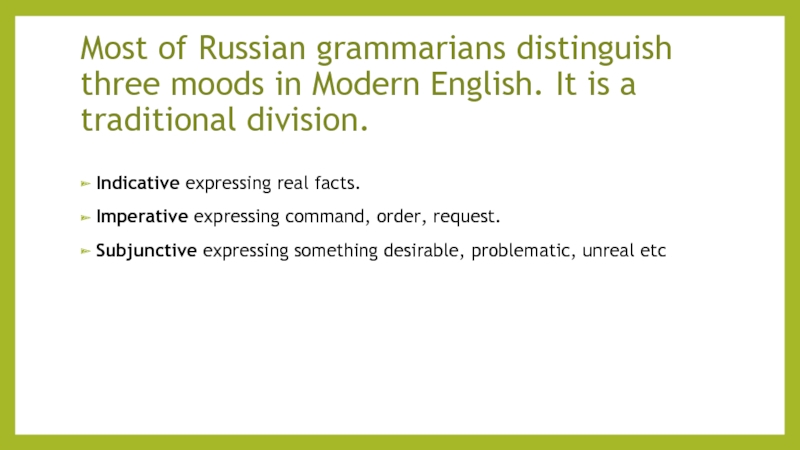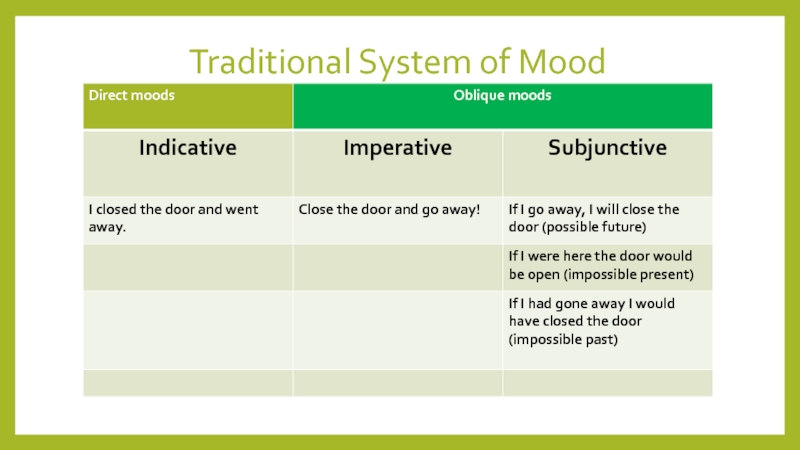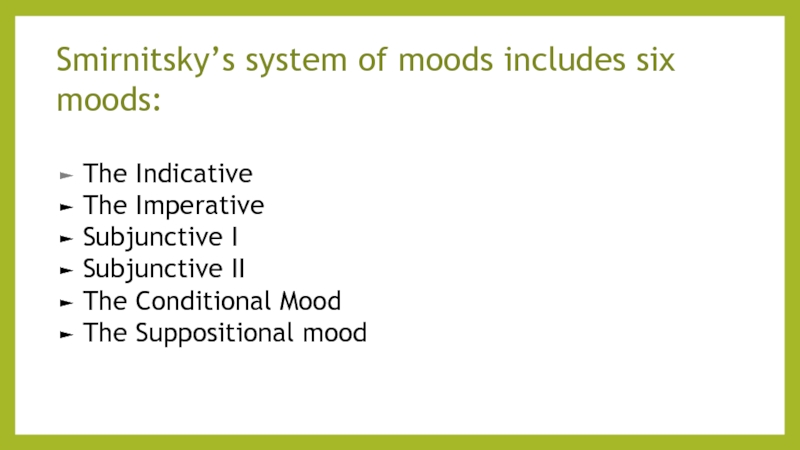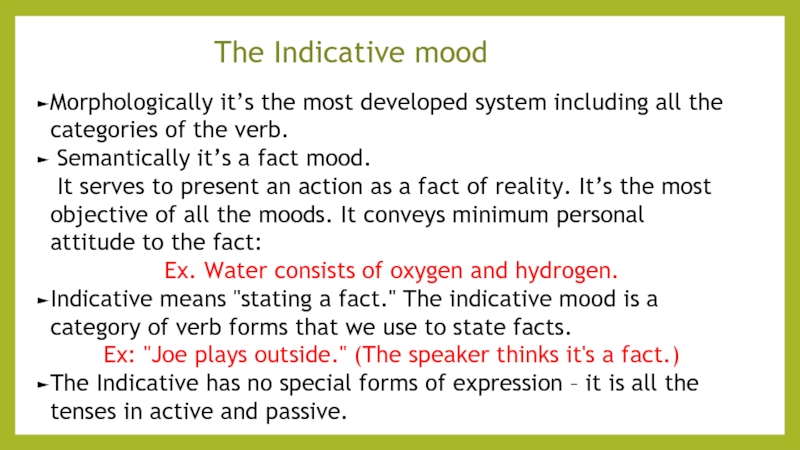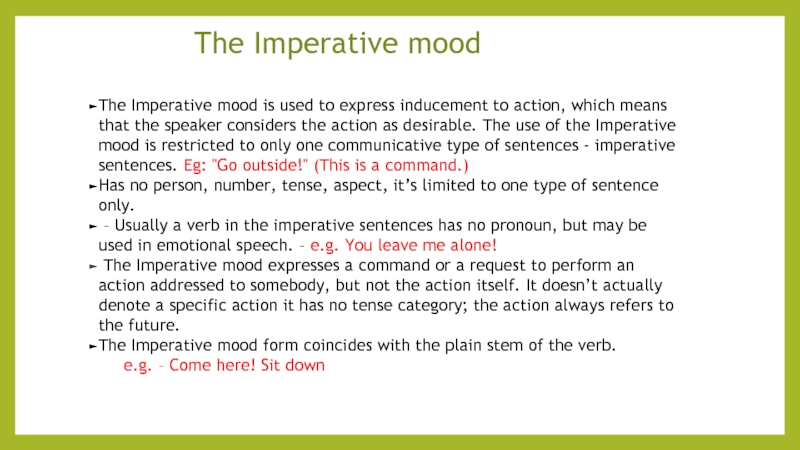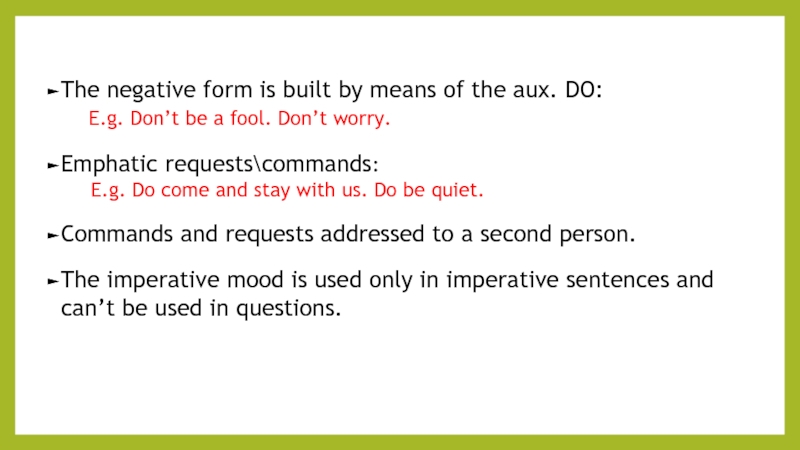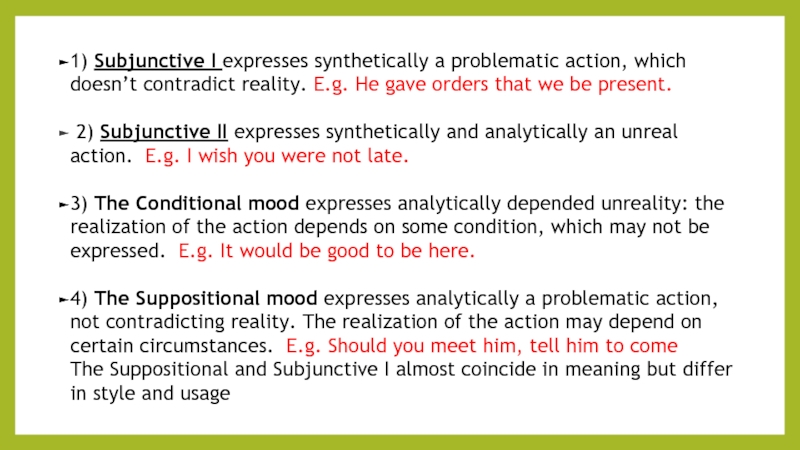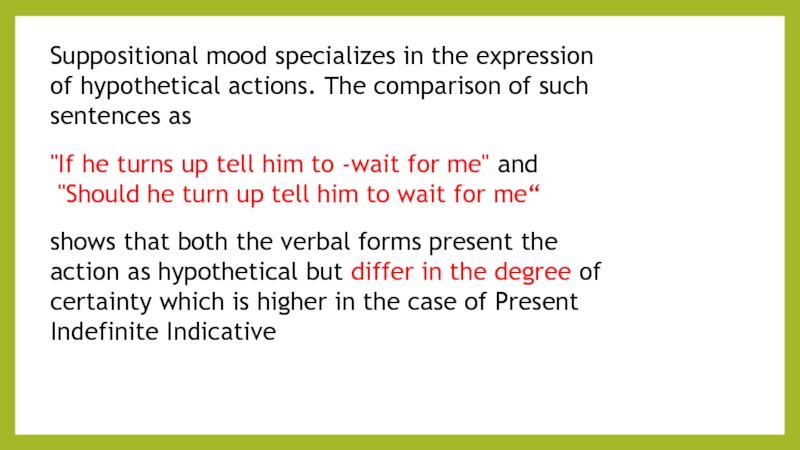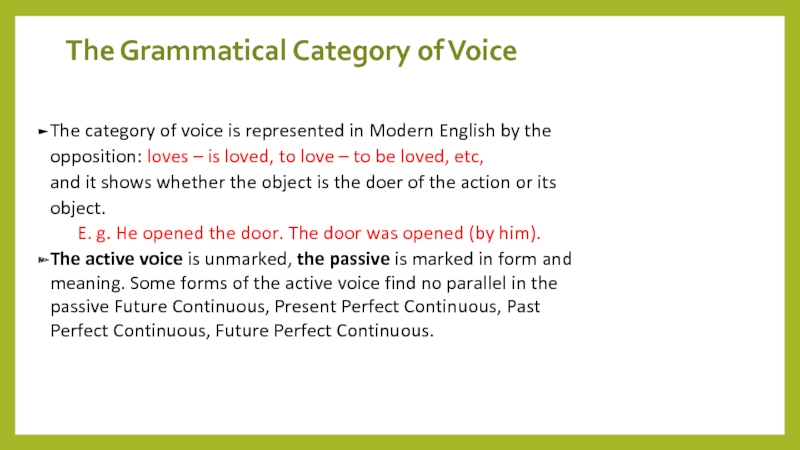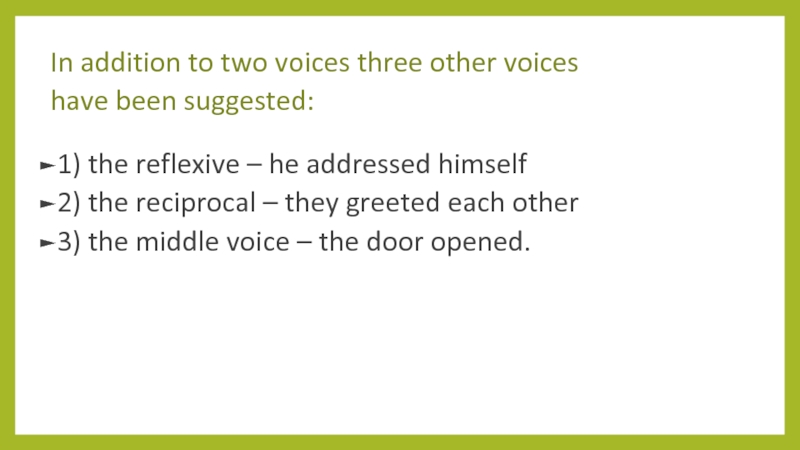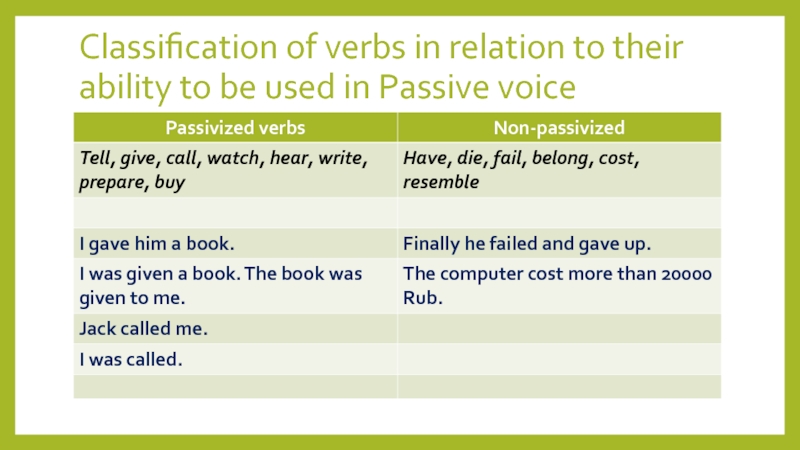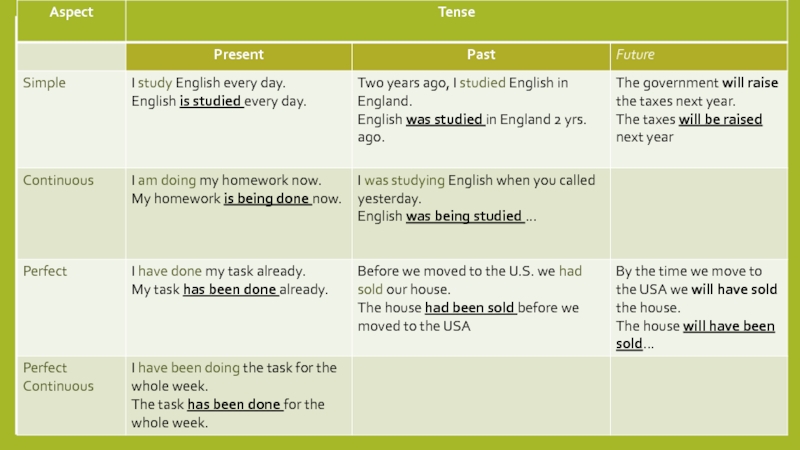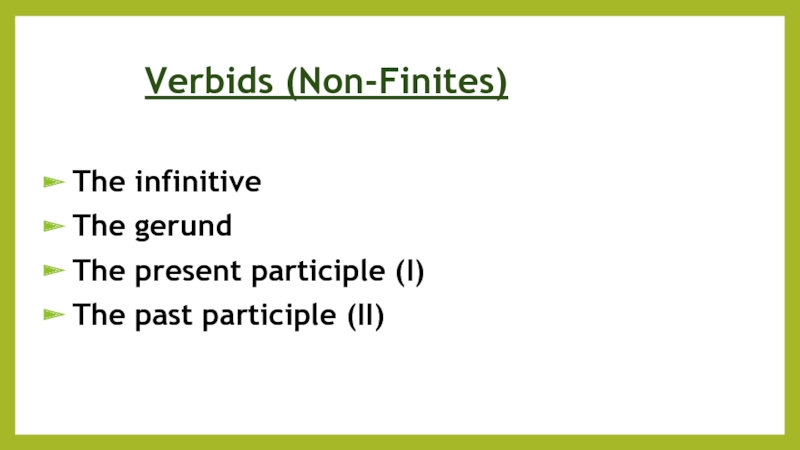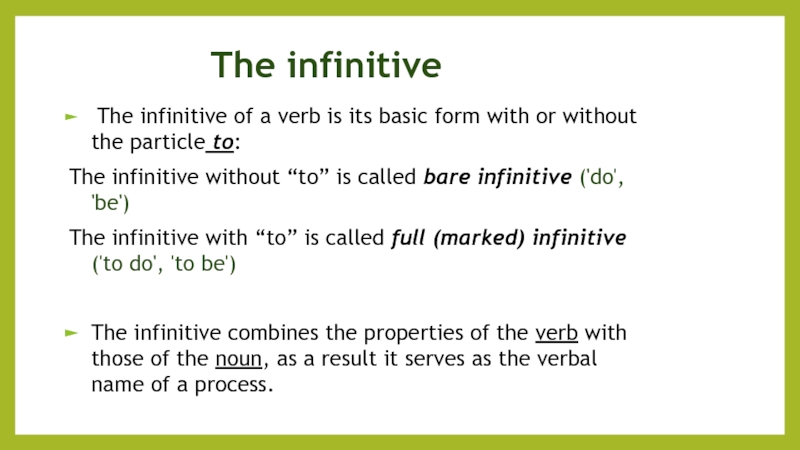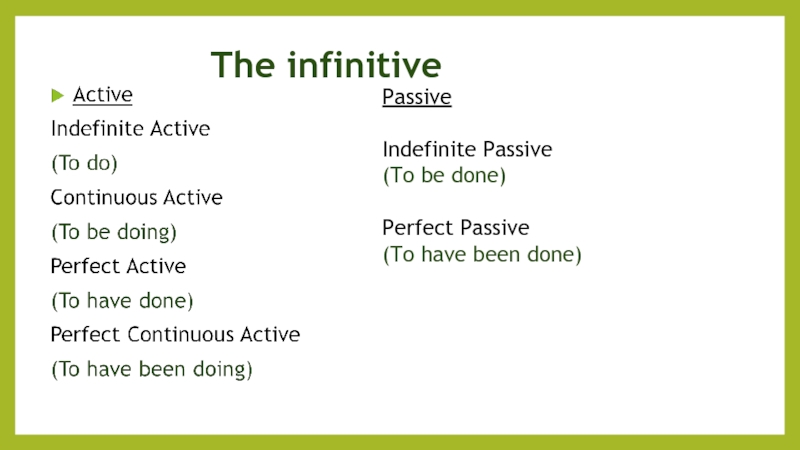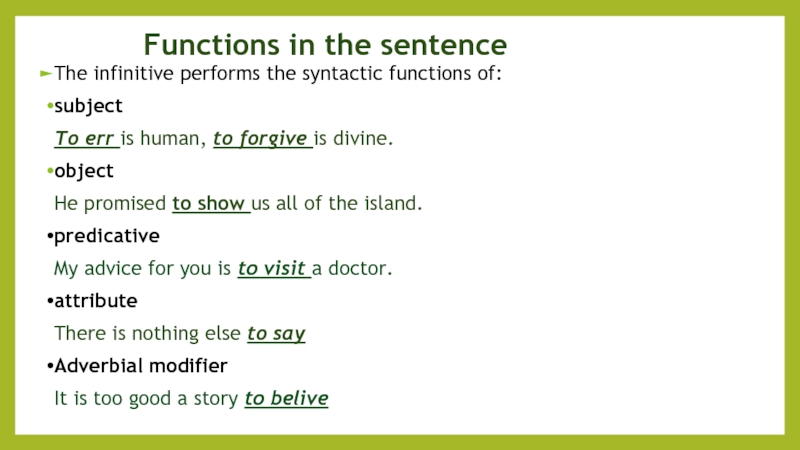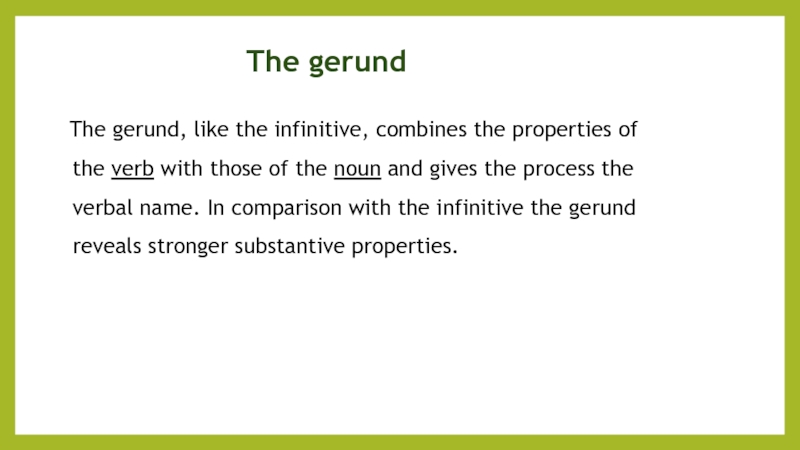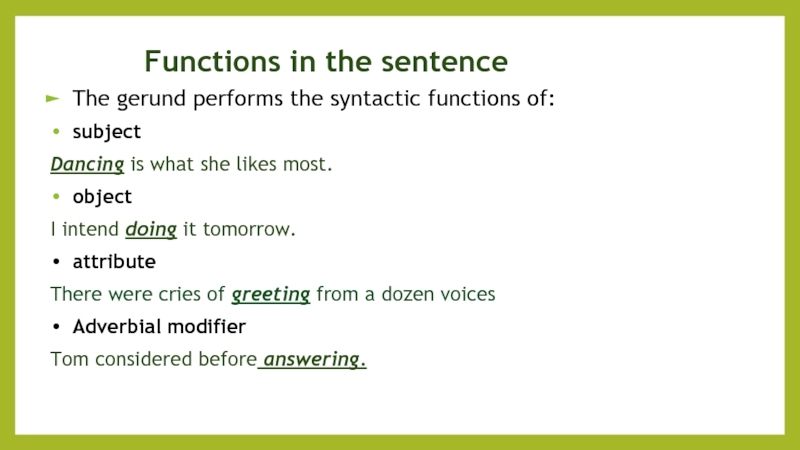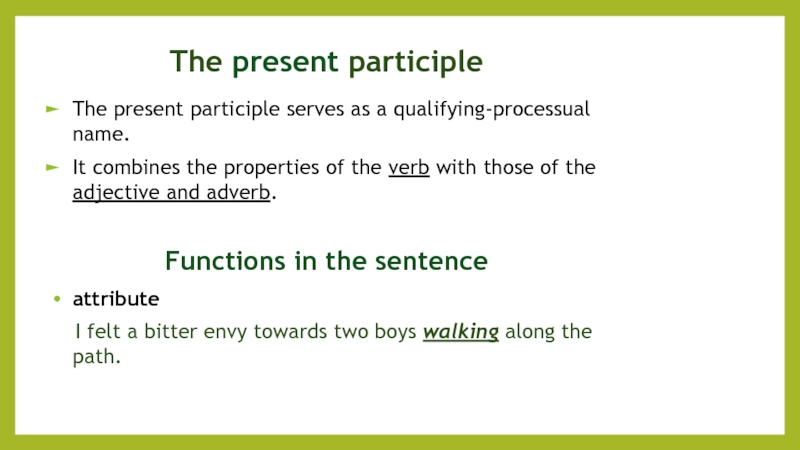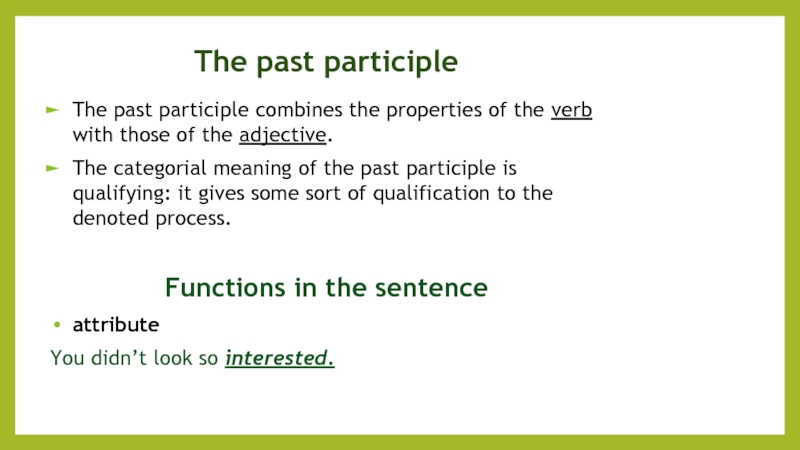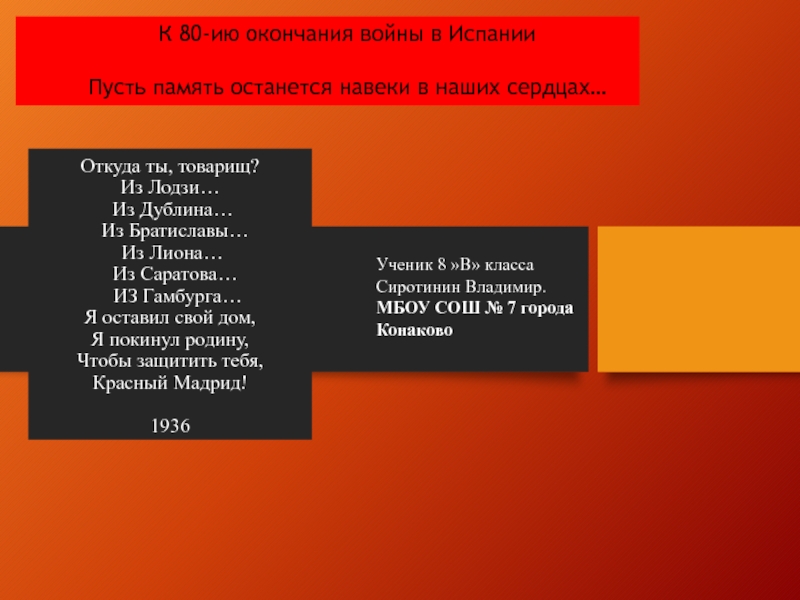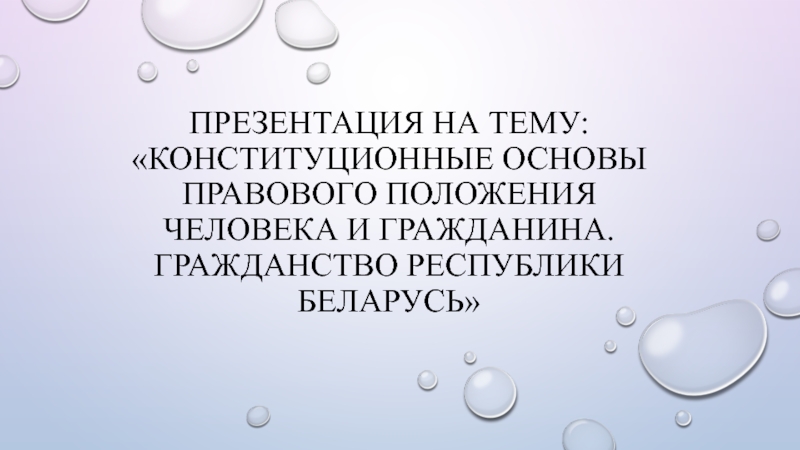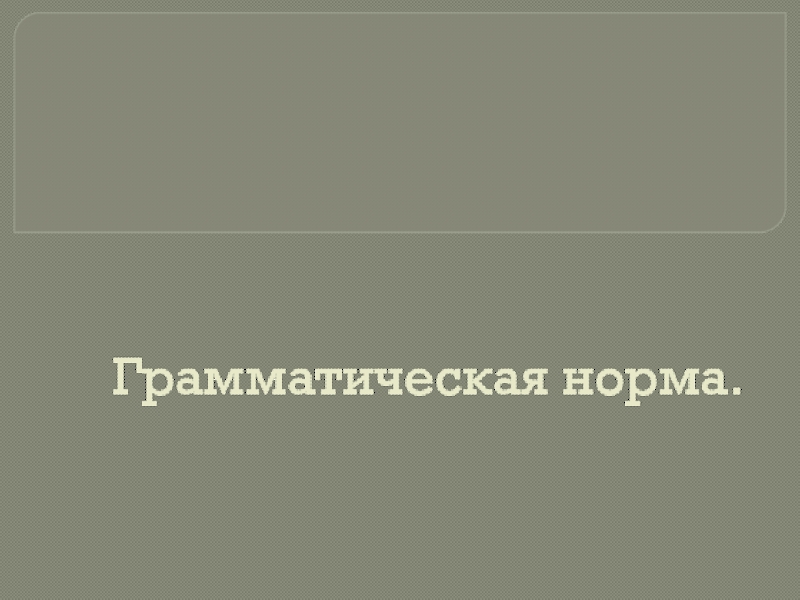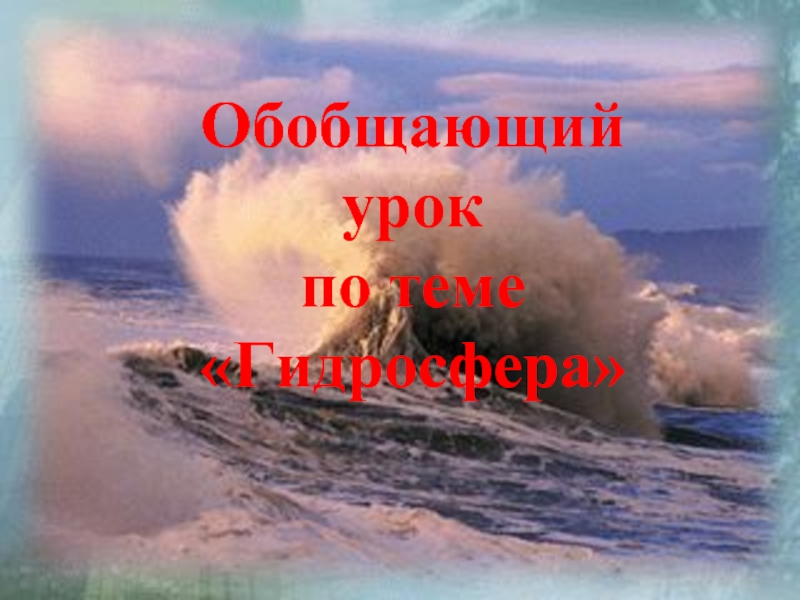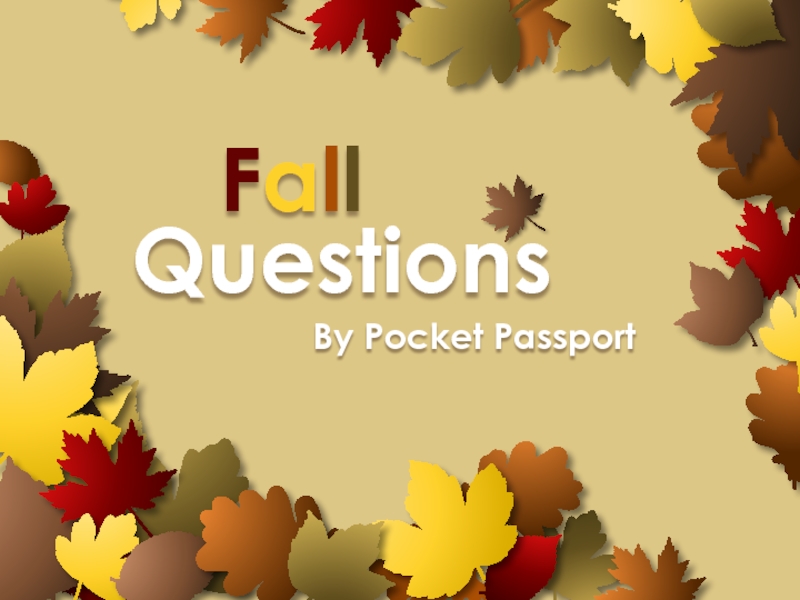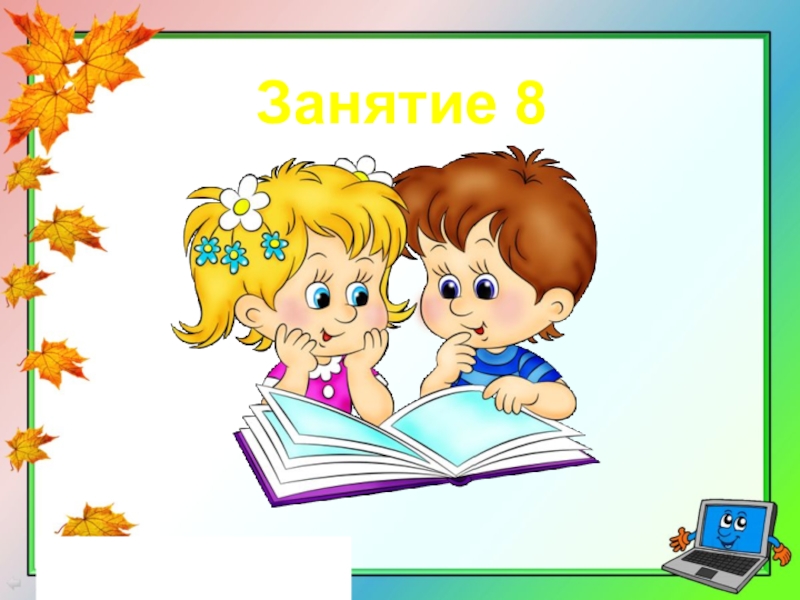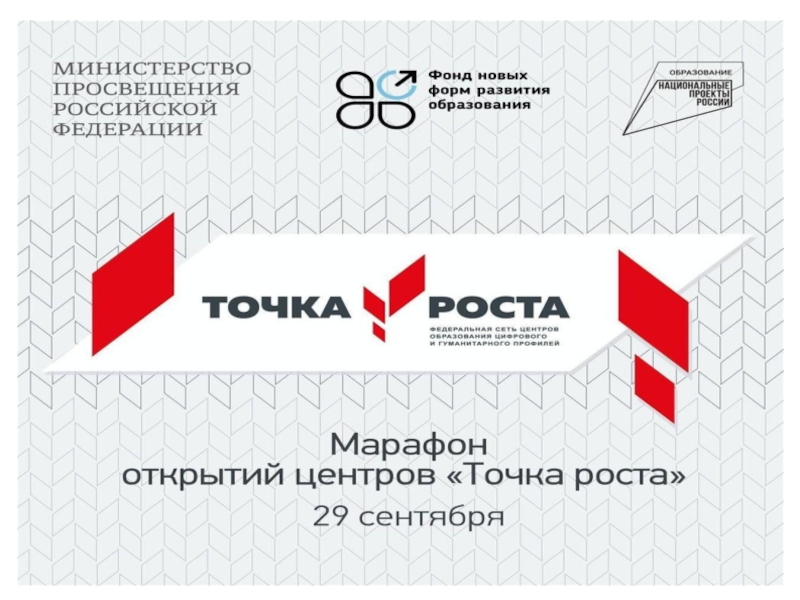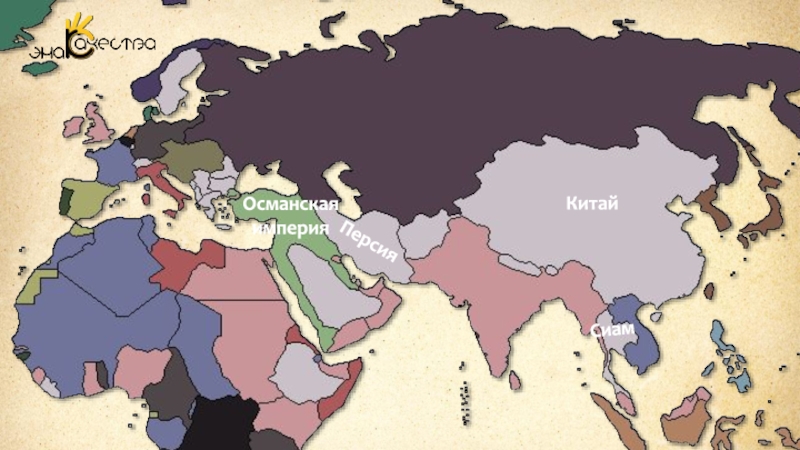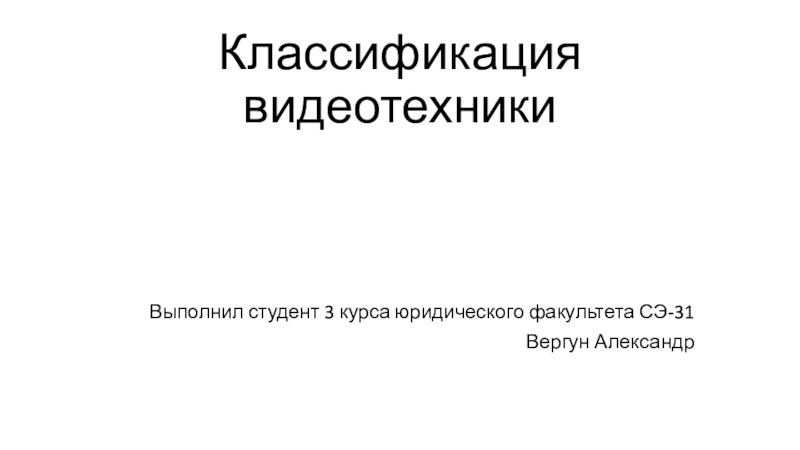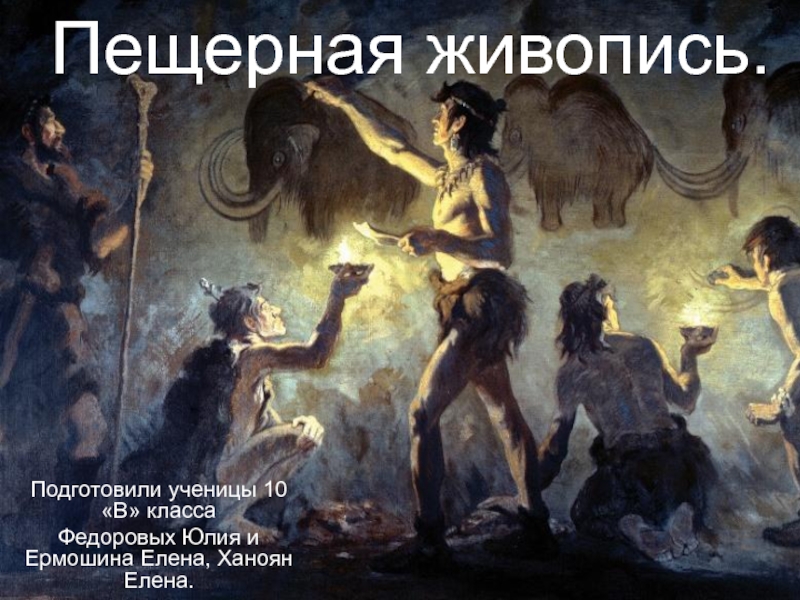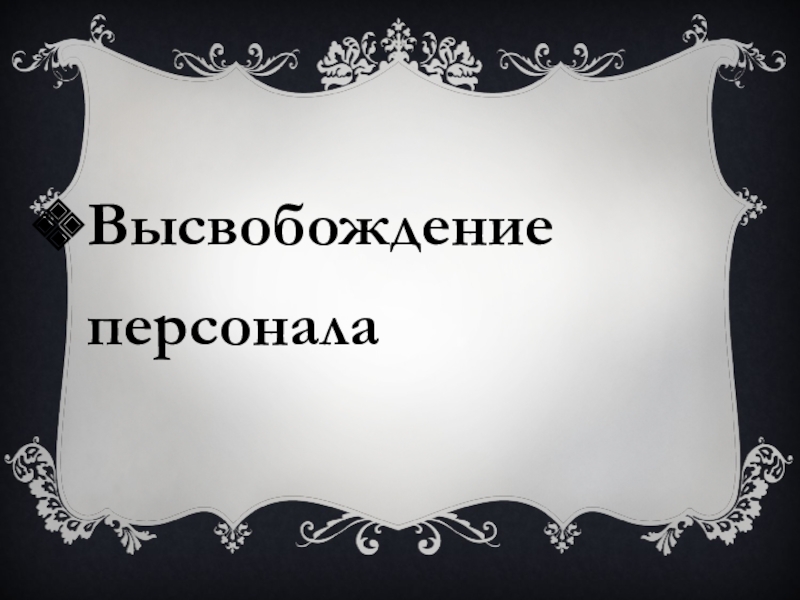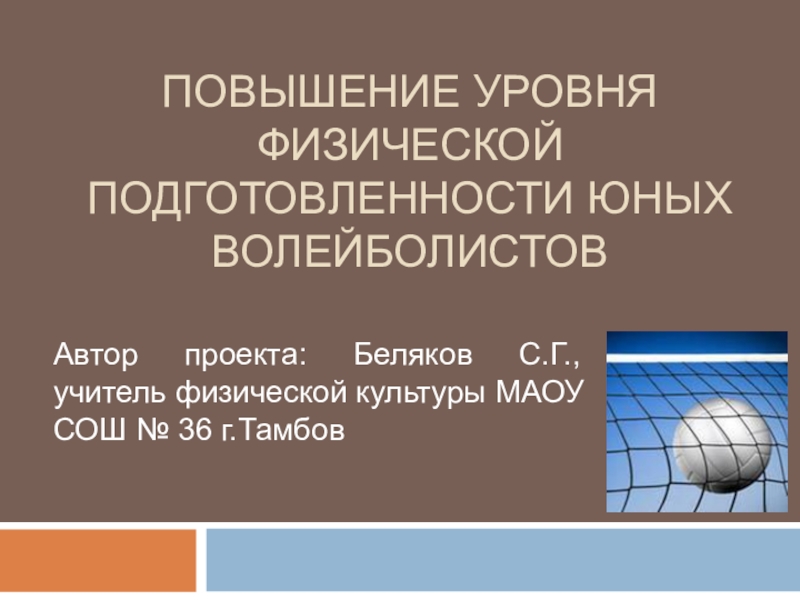Разделы презентаций
- Разное
- Английский язык
- Астрономия
- Алгебра
- Биология
- География
- Геометрия
- Детские презентации
- Информатика
- История
- Литература
- Математика
- Медицина
- Менеджмент
- Музыка
- МХК
- Немецкий язык
- ОБЖ
- Обществознание
- Окружающий мир
- Педагогика
- Русский язык
- Технология
- Физика
- Философия
- Химия
- Шаблоны, картинки для презентаций
- Экология
- Экономика
- Юриспруденция
The verb
Содержание
- 1. The verb
- 2. Verbs are a class of words used
- 3. VerbsFinite Non- finite(Verbids)TenseAspectNumberMoodVoiceNo tenseSometimes have aspect and voiceNo numberNo mood
- 4. Classification of Verbs
- 5. Tense and Aspect
- 6. Соntinuous tenses
- 7. Perfect tenses
- 8. Exercise 15. Use the Past Indefinite or
- 9. FutureWords and expressions used to speak about future
- 10. MOODMood is one of the kinds of
- 11. Most of Russian grammarians distinguish three moods
- 12. Traditional System of Mood
- 13. Smirnitsky’s system of moods includes six moods:
- 14. The Indicative mood Morphologically it’s the most
- 15. The Imperative moodThe Imperative mood is used
- 16. The negative form is built by means
- 17. 1) Subjunctive I expresses synthetically a problematic
- 18. Suppositional mood specializes in the expression of
- 19. The Grammatical Category of Voice The category of
- 20. In addition to two voices three other
- 21. Classification of verbs in relation to their ability to be used in Passive voice
- 22. Слайд 22
- 23. Verbids (Non-Finites)The infinitiveThe gerundThe present participle (I)The past participle (II)
- 24. The infinitive The infinitive of a verb
- 25. The infinitivePassiveIndefinite Passive(To be done)Perfect Passive(To have been done)
- 26. Functions in the sentence The infinitive performs
- 27. The gerund The gerund, like the
- 28. Functions in the sentence The gerund performs
- 29. The present participle The present participle
- 30. The past participle The past participle
- 31. Скачать презентанцию
Verbs are a class of words used to show the performance of an action (do, throw, run), existence (be), possession (have), or state (know, love) of a subject.
Слайды и текст этой презентации
Слайд 3Verbs
Finite
Non- finite(Verbids)
Tense
Aspect
Number
Mood
Voice
No tense
Sometimes have aspect and voice
No number
No mood
Слайд 8Exercise 15. Use the Past Indefinite or the Past Perfect
instead of the infinitives in brackets.
1. Suddenly he (to grit)
his teeth in angry exasperation. Not only he (to omit) to leave his card; he (to forget) to tell them who he (to be). 2. It (to be) perfectly true that he never (to take) the slightest interest in his clothes, a suit off the peg always (to serve) him excellently, (to cover) him, (to keep) him warm without elegance. 3. It (to be) nine o'clock and we (to come) to her room two hours before, as we (to do) often on those winter evenings. 4. At once Helen (to smile) at me; yet I (to see) that it (to be) an effort for her to clear her mind of what (to go) before. 5. Gideon (to wake) early that morning possibly because the ringing of the fire alarm (to be) in his mind most of the night. 6. He (to graduate) from Queen’s College before he (to take) his master’s degree at Christ Church, Oxford. 7. “What he (to say)? Tell us! Tell us!” He (to tell) them what he (to say) and what the rector (to say) and, when he (to tell) them, all the fellows (to fling) their caps and (to cry): “Hurroo!” 8. When he (to come back) to his seat his manner (to change). He (to be) gentle and kindly. 9. He (to see) he (to be) already further out than he (to hope) to be at this hour. 10. By the time Fenella (to take off) her coat and skirt and (to put on) her flannel dressing-gown, grandma (to be) quite ready. 11. No sooner we (to put down) our glasses than the waiter (to refill) them. 12. Inquiring for her at tea-time Soames (to leam) that Fleur (to be out) in the car since two.Слайд 10MOOD
Mood is one of the kinds of modality, which may
be expressed both by lexical means (modal verbs (may, can,
must, etc.) and modal words (perhaps, probably, etc.)).The category of mood presents the interpretation of the action by the speaker from the point of view of its relation to reality.
Слайд 11Most of Russian grammarians distinguish three moods in Modern English.
It is a traditional division.
Indicative expressing real facts.
Imperative expressing
command, order, request.Subjunctive expressing something desirable, problematic, unreal etc
Слайд 13Smirnitsky’s system of moods includes six moods:
The Indicative
The Imperative
Subjunctive I
Subjunctive II
The
Conditional Mood The Suppositional mood
Слайд 14The Indicative mood
Morphologically it’s the most developed system including
all the categories of the verb.
Semantically it’s a fact
mood.It serves to present an action as a fact of reality. It’s the most objective of all the moods. It conveys minimum personal attitude to the fact:
Ex. Water consists of oxygen and hydrogen.
Indicative means "stating a fact." The indicative mood is a category of verb forms that we use to state facts.
Ex: "Joe plays outside." (The speaker thinks it's a fact.)
The Indicative has no special forms of expression – it is all the tenses in active and passive.
Слайд 15The Imperative mood
The Imperative mood is used to express inducement
to action, which means that the speaker considers the action
as desirable. The use of the Imperative mood is restricted to only one communicative type of sentences - imperative sentences. Eg: "Go outside!" (This is a command.)Has no person, number, tense, aspect, it’s limited to one type of sentence only.
– Usually a verb in the imperative sentences has no pronoun, but may be used in emotional speech. – e.g. You leave me alone!
The Imperative mood expresses a command or a request to perform an action addressed to somebody, but not the action itself. It doesn’t actually denote a specific action it has no tense category; the action always refers to the future.
The Imperative mood form coincides with the plain stem of the verb.
e.g. – Come here! Sit down
Слайд 16
The negative form is built by means of the aux.
DO:
E.g. Don’t be a fool. Don’t worry.
Emphatic requests\commands:
E.g. Do come and stay with us. Do be quiet.
Commands and requests addressed to a second person.
The imperative mood is used only in imperative sentences and can’t be used in questions.
Слайд 17
1) Subjunctive I expresses synthetically a problematic action, which doesn’t
contradict reality. E.g. He gave orders that we be present.
2) Subjunctive II expresses synthetically and analytically an unreal action. E.g. I wish you were not late. 3) The Conditional mood expresses analytically depended unreality: the realization of the action depends on some condition, which may not be expressed. E.g. It would be good to be here.
4) The Suppositional mood expresses analytically a problematic action, not contradicting reality. The realization of the action may depend on certain circumstances. E.g. Should you meet him, tell him to come
The Suppositional and Subjunctive I almost coincide in meaning but differ in style and usage
Слайд 18Suppositional mood specializes in the expression of hypothetical actions. The
comparison of such sentences as
"If he turns up tell
him to -wait for me" and"Should he turn up tell him to wait for me“
shows that both the verbal forms present the action as hypothetical but differ in the degree of certainty which is higher in the case of Present Indefinite Indicative
Слайд 19The Grammatical Category of Voice
The category of voice is represented
in Modern English by the opposition: loves – is loved,
to love – to be loved, etc,and it shows whether the object is the doer of the action or its object.
E. g. He opened the door. The door was opened (by him).
The active voice is unmarked, the passive is marked in form and meaning. Some forms of the active voice find no parallel in the passive Future Continuous, Present Perfect Continuous, Past Perfect Continuous, Future Perfect Continuous.
Слайд 20In addition to two voices three other voices have been
suggested:
1) the reflexive – he addressed himself
2) the reciprocal – they greeted
each other3) the middle voice – the door opened.
Слайд 23Verbids (Non-Finites)
The infinitive
The gerund
The present participle (I)
The past participle (II)
Слайд 24The infinitive
The infinitive of a verb is its basic
form with or without the particle to:
The infinitive without “to”
is called bare infinitive ('do', 'be')The infinitive with “to” is called full (marked) infinitive ('to do', 'to be')
The infinitive combines the properties of the verb with those of the noun, as a result it serves as the verbal name of a process.
Слайд 26Functions in the sentence
The infinitive performs the syntactic functions of:
subject
To err is human, to forgive is divine.
object
He promised
to show us all of the island.predicative
My advice for you is to visit a doctor.
attribute
There is nothing else to say
Adverbial modifier
It is too good a story to belive
Слайд 27The gerund
The gerund, like the infinitive, combines the
properties of the verb with those of the noun and
gives the process the verbal name. In comparison with the infinitive the gerund reveals stronger substantive properties.Слайд 28Functions in the sentence
The gerund performs the syntactic functions of:
subject
Dancing is what she likes most.
object
I intend doing it tomorrow.
attribute
There
were cries of greeting from a dozen voicesAdverbial modifier
Tom considered before answering.
Слайд 29The present participle
The present participle serves as a qualifying-processual
name.
It combines the properties of the verb with those of
the adjective and adverb.Functions in the sentence
attribute
I felt a bitter envy towards two boys walking along the path.
Слайд 30The past participle
The past participle combines the properties of
the verb with those of the adjective.
The categorial meaning
of the past participle is qualifying: it gives some sort of qualification to the denoted process.Functions in the sentence
attribute
You didn’t look so interested.
